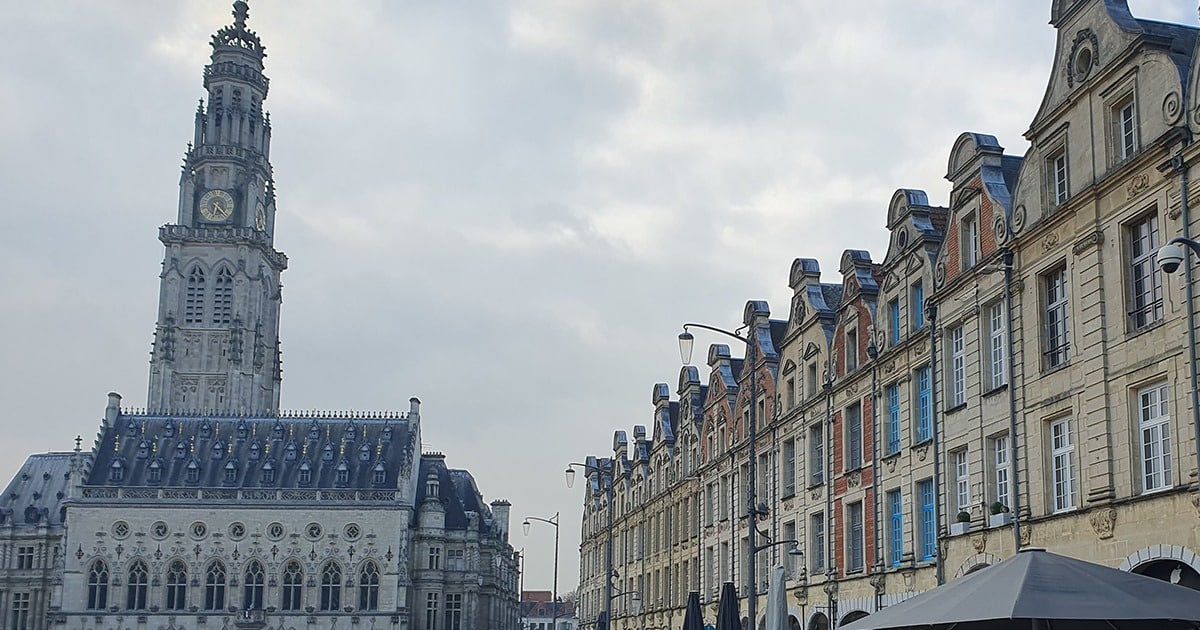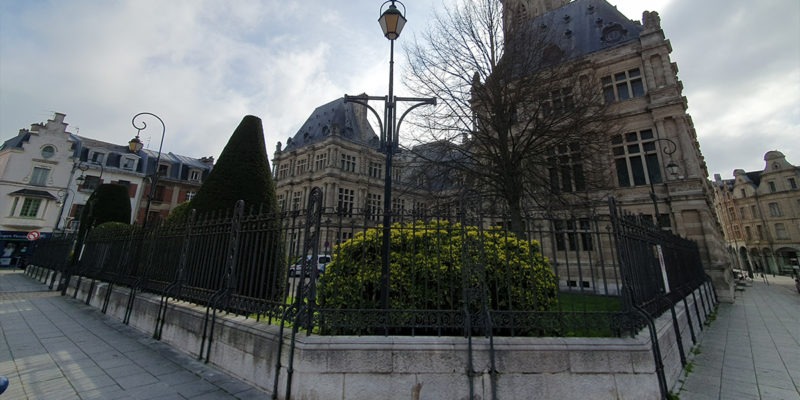Pierre Paquet (1875-1959) was a French architect whose achievements left an indelible mark on the history of French architecture, particularly in the charming town of Arras. Born in Felletin, he left his mark on his era through his reconstruction and restoration work. In this article, we invite you to discover the life and work of Pierre Paquet, focusing on his remarkable achievements.
A short biography of Pierre Paquet
Pierre Paquet was born on August 6, 1875 in the town of Felletin, in the Creuse department. He studied at the École des Beaux-Arts and the École des Arts Décoratifs. During this period, he had the opportunity to learn from renowned architects Émile Vaudremer and Charles Genuys. Following his success in the diocesan architects’ competition in 1901, Paquet had the opportunity to work in the dioceses of Cambrai, Blois and Bordeaux. In 1905, he was appointed chief architect of historic monuments, a position he held for over four decades, until 1947.
Pierre Paquet’s work in Arras
After the First World War, the city of Arras was devastated and in need of major restoration. Pierre Paquet played a crucial role in this undertaking, rebuilding and bringing back to life some of the city’s most emblematic monuments.
Notre-Dame-et-Saint-Vaast Cathedral, Arras
The Cathedral of Notre-Dame-et-Saint-Vaast in Arras is an emblematic historical and religious building in the Hauts-de-France region of France. Originally built in the 18th century, it reflects a blend of architectural styles, including Neoclassical and Gothic. The cathedral is dedicated to Notre-Dame, the Virgin Mary, and to Saint Vaast, a bishop who played an important role in the Christianization of the region. During the First World War, the city of Arras was badly hit, and the cathedral did not escape destruction. The bombing caused extensive damage to the structure, jeopardizing the stability and beauty of the edifice. It was against this backdrop that Pierre Paquet was asked to restore the cathedral and bring it back to life. Thanks to his expertise and innovative vision, he succeeded in designing a concrete roof for the building, an avant-garde solution for its time. This choice not only restored the cathedral’s splendor, but also ensured its solidity and preservation for future generations.
Arras town hall and belfry
The Arras belfry and town hall, true icons of the city, suffered extensive destruction during the war. Pierre Paquet wascommissioned to oversee their reconstruction, meticulously preserving the original architectural style while incorporating modern elements to ensure the buildings’ durability. The Arras Belfry, a UNESCO World Heritage Site, is a remarkable example of flamboyant Gothic architecture. This imposing edifice once served as a watchtower and gathering place for the town’s inhabitants. Thanks to the meticulous work of Pierre Paquet, the belfry has been carefully restored, respecting its original aesthetic and symbolic role at the heart of the town.
As for the Town Hall, it represents another example of Arras’ architectural heritage. Its Gothic style and intricate ornamentation bear witness to the cultural richness of the region. Pierre Paquet brought this building back to life, preserving its historic features while adding contemporary elements to ensure its solidity and adaptability to modern needs (notably, the removal of a corridor that allowed quick passage from the Place des Héros to today’s Place de la Vacquerie). The reconstruction of the Arras belfry and town hall under Pierre Paquet’s direction illustrates his talent and ability to combine respect for heritage with innovation. These achievements testify to this architect’s expertise and his major contribution to the restoration and preservation of France’s architectural heritage.
By restoring color to the buildings of Arras, we can say that he is undeniably an illustrious figure for the town.

Pierre Paquet becomes an emblematic figure of Arras’ architectural revival
His other notable achievements, elsewhere
In addition to his remarkable achievements in Arras, Pierre Paquet has worked on the restoration and construction of a multitude of other buildings in France, testifying to his expertise and versatility. Notable projects include the Lycée Jules-Ferry in Paris, the Sacré-Coeur church in Gentilly and the reconstruction of the village of Oradour-sur-Glane following the Second World War.
Lycée Jules-Ferry, Paris
Located in the 9th arrondissement of Paris, the Lycée Jules-Ferry is a public secondary school built in 1913.
Pierre Paquet was involved in its design and construction, ensuring an environment conducive to the education and fulfillment of students. The lycée’s architecture reflects the harmony between respect for tradition and adaptation to contemporary needs.
Sacré-Coeur church, Gentilly
The Sacré-Coeur de Gentilly church, built between 1933 and 1935, is another example of Pierre Paquet’s talent.
Located near the Cité internationale universitaire de Paris, this church is distinguished by its modern, uncluttered architecture. It is a striking feature of Paris’s peripheral landscape, and testifies to Paquet’s ability to design religious edifices in keeping with the times.
Rebuilding the village of Oradour-sur-Glane
After the Second World War, the village of Oradour-sur-Glane was the scene of a massacre perpetrated by Nazi troops. As part of a project to rebuild the village, Pierre Paquet was asked to design and supervise the creation of a new town. His work brought Oradour-sur-Glane back to life, while preserving the memory of the tragic events that took place there.
R.C.
